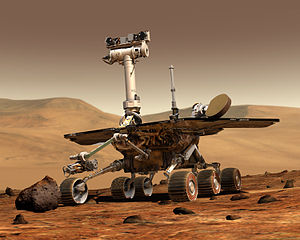Mission To Mars – How The Island Played Its Part

On 6th August 2012 the NASA explorer vehicle Curiosity touched down on the surface of Mars, its mission; to analyse the surface of the planet, look for water and study the Martian climate. Yesterday it was revealed the vital role the Isle of Wight played in the venture.
Planning for the mission had taken over eight years, and The Candy Press can now reveal that in the summer of 2008 a prototype of the rover arrived on the Island for extensive testing. The Martian landscape is an inhospitable environment, and it was vital that Curiosity would survive intact – as project leader Chuck Dover explained; “If something goes wrong with the vehicle we can’t simply call out the AA.”
Island roads proved the ideal testing ground. Deep ruts, cracks in the road surface, giant potholes and patches of loose gravel accurately mirror the worst of conditions on the red planet. Mr Dover said that Curiosity was tested to its limits and beyond.
“We suffered damaged wheel rims, dented undersides and various shock damage, all caused by the hostile conditions on Isle of Wight roads. The shocking state of the highways exceeded our expectations and allowed us to find weaknesses in our initial design.”
Modifications were made and a year later the improved version returned to the Island for final testing. This time around the vehicle was more than a match for our roads, even coping with the unexpected melting tarmac found that summer. Mr Dover said “The next time islanders look up at the night sky and wonder what is out there; I hope they feel proud of the contribution they have made to interplanetary exploration.”
As with much NASA technology, it is hoped that lessons learned will filter down to consumer products, opening up the possibility that cars available to the general public will also eventually be able to cope with the worst roads in the UK – even on the Isle of Wight.

